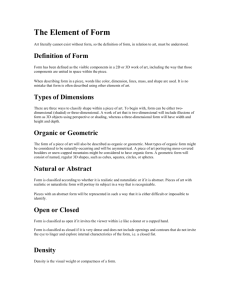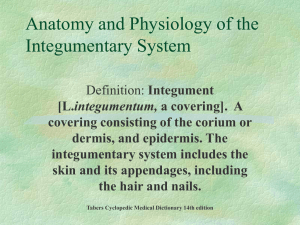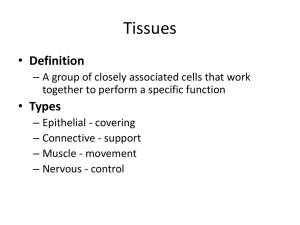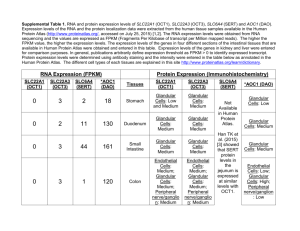Review guide - Exam 1 In preparation for the upcoming exam
advertisement
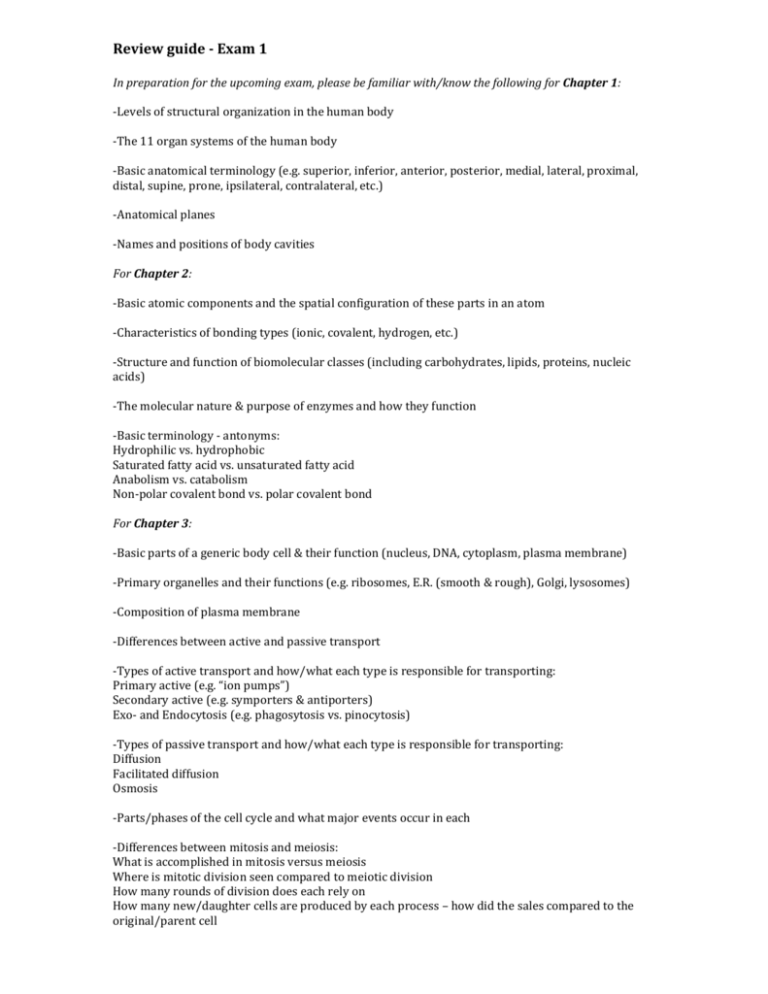
Review guide - Exam 1 In preparation for the upcoming exam, please be familiar with/know the following for Chapter 1: -Levels of structural organization in the human body -The 11 organ systems of the human body -Basic anatomical terminology (e.g. superior, inferior, anterior, posterior, medial, lateral, proximal, distal, supine, prone, ipsilateral, contralateral, etc.) -Anatomical planes -Names and positions of body cavities For Chapter 2: -Basic atomic components and the spatial configuration of these parts in an atom -Characteristics of bonding types (ionic, covalent, hydrogen, etc.) -Structure and function of biomolecular classes (including carbohydrates, lipids, proteins, nucleic acids) -The molecular nature & purpose of enzymes and how they function -Basic terminology - antonyms: Hydrophilic vs. hydrophobic Saturated fatty acid vs. unsaturated fatty acid Anabolism vs. catabolism Non-polar covalent bond vs. polar covalent bond For Chapter 3: -Basic parts of a generic body cell & their function (nucleus, DNA, cytoplasm, plasma membrane) -Primary organelles and their functions (e.g. ribosomes, E.R. (smooth & rough), Golgi, lysosomes) -Composition of plasma membrane -Differences between active and passive transport -Types of active transport and how/what each type is responsible for transporting: Primary active (e.g. “ion pumps”) Secondary active (e.g. symporters & antiporters) Exo- and Endocytosis (e.g. phagosytosis vs. pinocytosis) -Types of passive transport and how/what each type is responsible for transporting: Diffusion Facilitated diffusion Osmosis -Parts/phases of the cell cycle and what major events occur in each -Differences between mitosis and meiosis: What is accomplished in mitosis versus meiosis Where is mitotic division seen compared to meiotic division How many rounds of division does each rely on How many new/daughter cells are produced by each process – how did the sales compared to the original/parent cell For Chapter 4: Types of cell junctions and functions & characteristics of each The four basic tissue types: Epithelial General functions and universal characteristics The basic structure and types of epithelial tissue and how they are classified (Hint: 2 criteria, shape and layer arrangement) 2 subtypes based on functions of epithelial tissue Difference between endocrine and exocrine glandular tissue How exocrine glandular epithelium is structurally classified (terms to know: acinar, tubular, simple, compound) and how it is functionally classified (merocrine vs. apocrine vs. holocrine) Connective General functions and universal characteristics The basic structure and types of mature connective tissue and how they are classified (Hint: Loose types vs. Dense types, cartilage types vs. bone, and liquid (blood)) Muscular General features of muscular tissue Differences and similarities among the three muscle tissue types Nervous 2 basic cell types General structure and function of Neurons For Chapter 5: Components of the Integumentary System Characteristics of each layer of the epidermis (4 or 5 layers depending on thick vs. thin skin) and cell types (and unction of these cells) found within each layer Characteristics of the 2 layers/regions of the dermis Composition of the hypodermis/subcutaneous layer Basic anatomy of a hair The general layer of the skin from which a hair originates (epidermis, dermis or subcutaneous) The types of skin glands and the product secreted by each Functions of the skin Types of burns and how they are classified How to determine the extent/percentage of burns covering the body using the “Rule-of-Nines” Method





